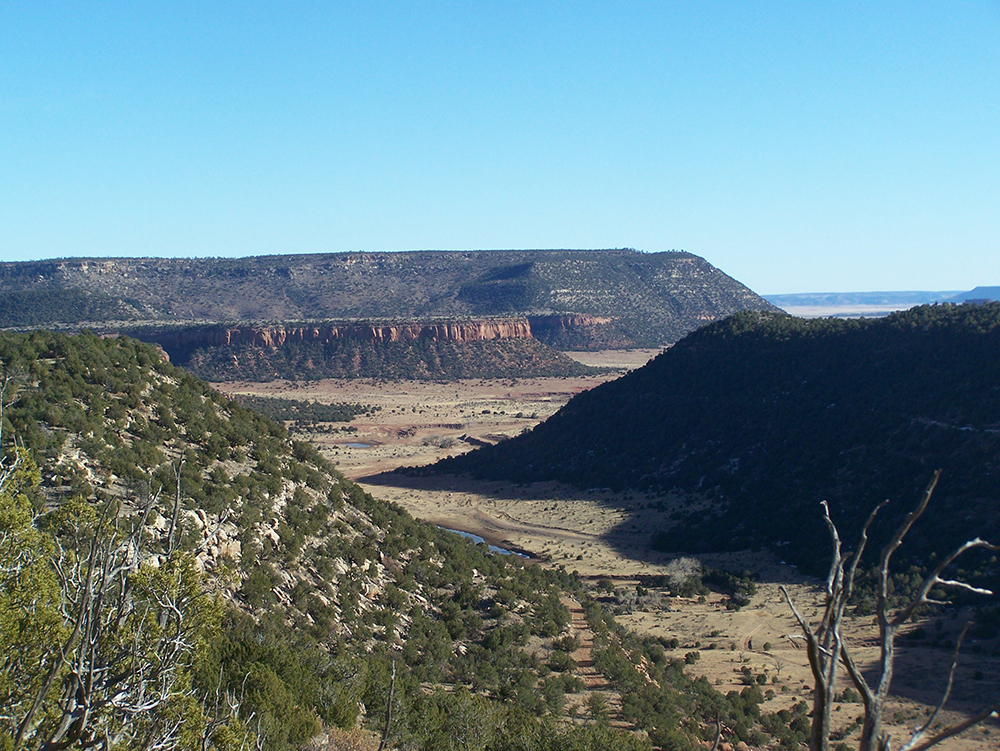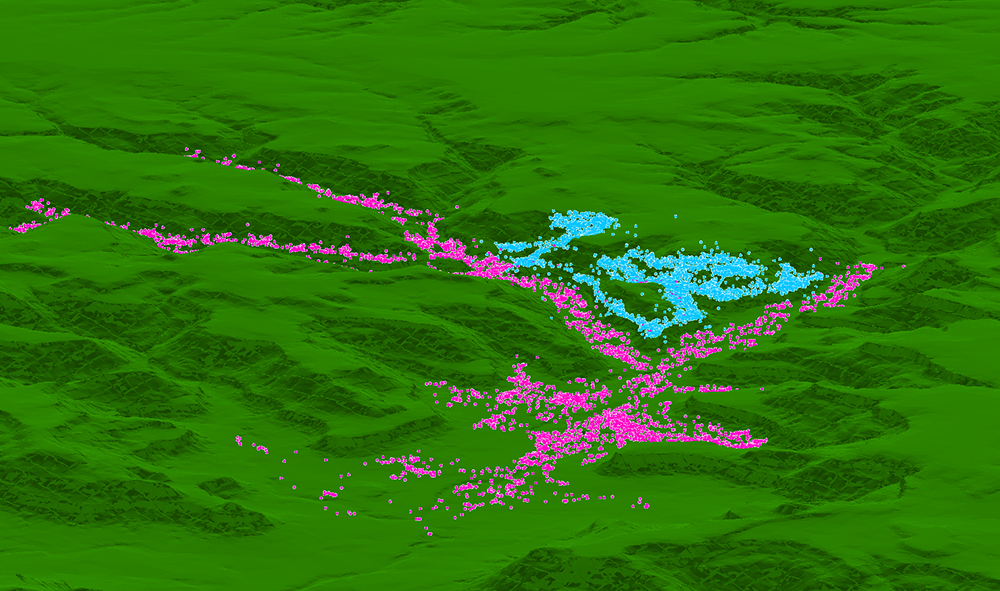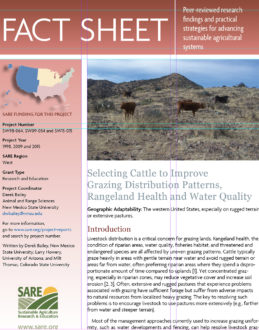In our first SARE study, stubble heights of grasses and sedges in riparian areas were 5 inches in pastures grazed by hill climbing cows and only 3 inches in pastures grazed by bottom dwelling cows [13]. The differences in grass and sedge stubble heights observed between these treatments would be economically important for many public land ranchers. A standard for grazing on riparian areas is often forage stubble height of 4–5 inches [14]. If stubble heights fall below the standard, livestock are often required to be moved to a new pasture or off the allotment. In our first SARE study [13], pastures grazed by hill climbers had acceptable grazing levels based on this standard, while grazing levels in pastures grazed by bottom dwellers were not acceptable. Forage utilization measurements on upland slopes also suggested that hill climbers used rough terrain more extensively than bottom dwellers. Forage utilization in pastures grazed by hill climbers was affected less by slope, horizontal distance to water and vertical distance to water than pastures grazed by bottom dwellers. These results demonstrate that selection for grazing distribution has the potential to improve conditions of riparian areas and other sensitive areas that have been heavily grazed in the past, and to increase the use of upland slopes that previously received little grazing.


The impact of selection for distribution on performance of the herd is an important consideration for ranchers. Research conducted in our first SARE project [6, 7] found that the location where cows grazed was not related to their pregnancy rates, weight or body condition score. In addition, cattle that used high and steep terrain had similar calf weaning weights to cows that remained in gentle terrain near water. Thus, our past research findings strongly suggest that selection of animals that spend more time on high upland slopes and culling cows that graze in lower terrain near water would have no adverse impacts on any conventional production metrics, including calf growth, cow body weight or condition, or pregnancy rates. Furthermore, our more recent research findings support that genetic selection for animals with more dispersed grazing patterns would over time create herds that have fewer environmental impacts on riparian areas and other critical habitats.
